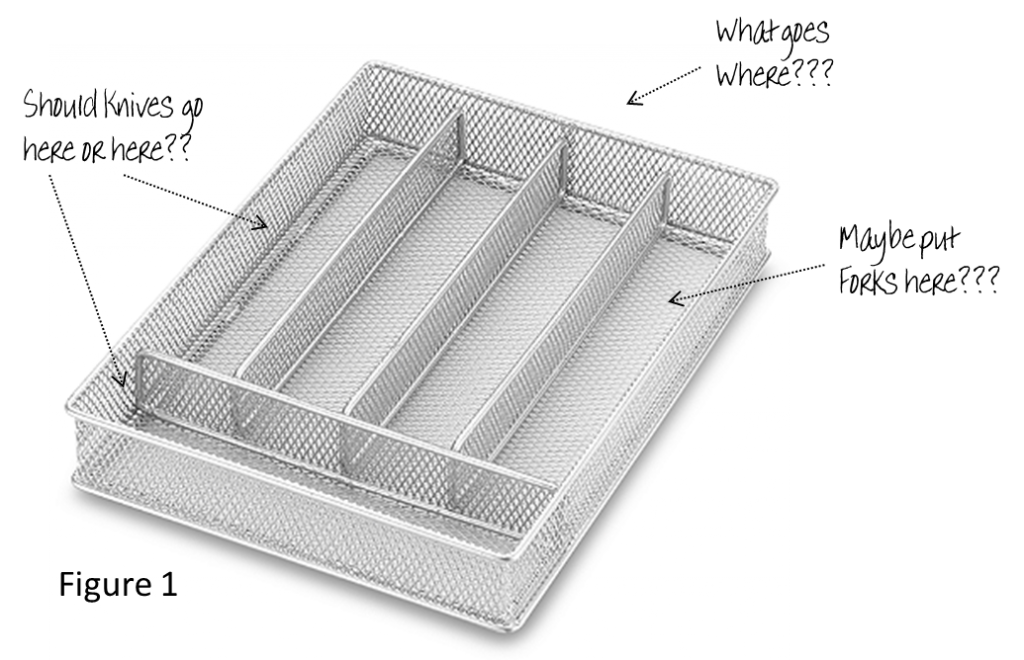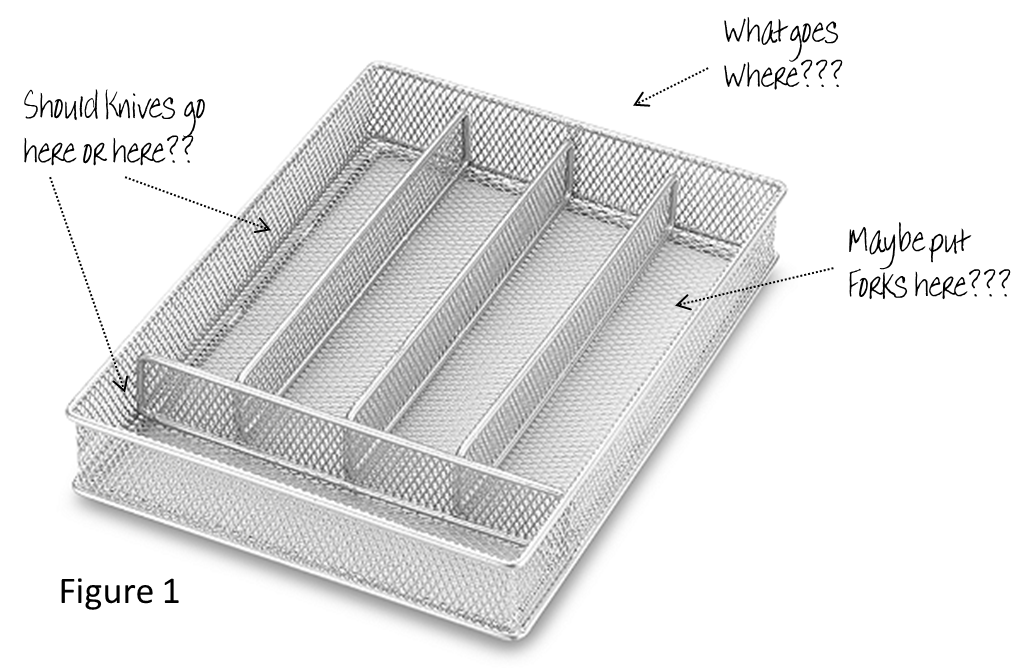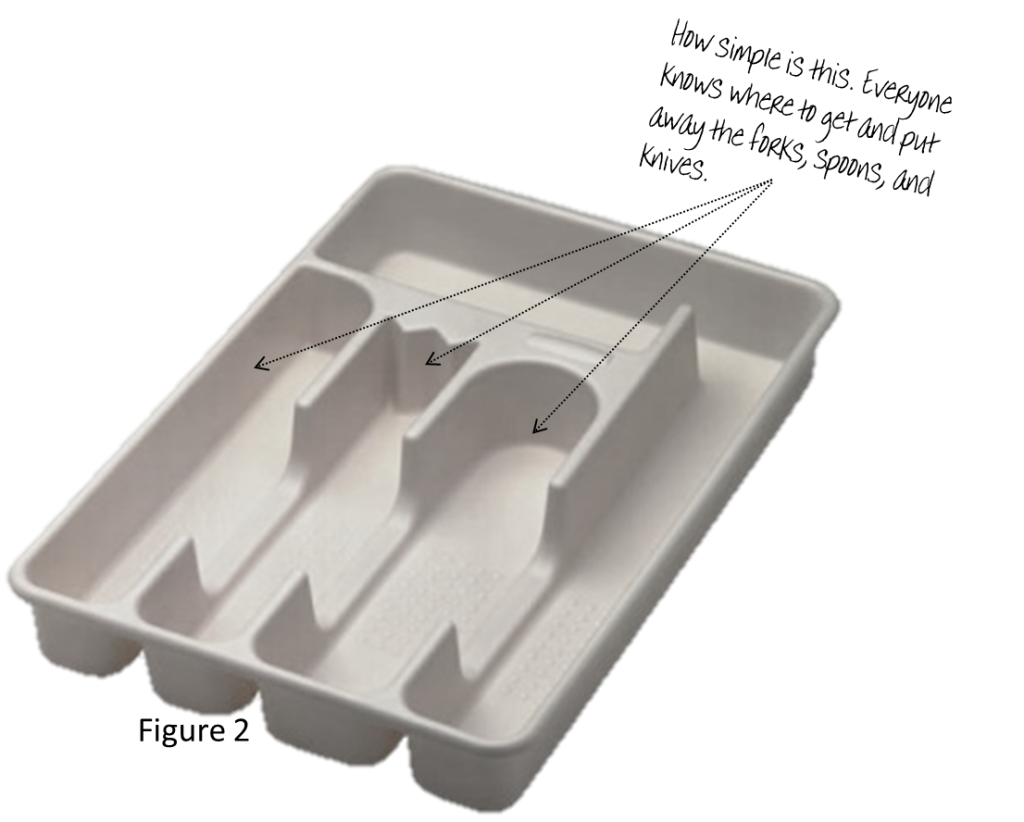There is something quite marvelous about a silverware drawer. It is the perfect example of intuitive design. For most of my life I never paid attention to the simple and effective design of the silverware organizer until one evening when my babysitter offered to put away my dishes. Of course I said yes. Who would turn down that offer? I assumed she would figure out where everything went so I left her without providing further instruction.
The next day, however, when I opened the silverware drawer I noticed that the babysitter put away the forks, spoons, and knives in different slots than I normally do. You see, I don’t have one of those silverware holders that has the outlines of a fork, spoon, and knife. I just have rectangular slots. Since it was empty when the babysitter put away the silverware, there was no way for her to know where I usually put my forks, spoons, and knives. 
This rather trivial experience lead me to come up with a simple analogy or model, if you will, for knowledge management. It should be as simple as those classic plastic silverware holders for forks, spoons, and knives (see Fig. 2). This means that content creators and consumers should intuitively know where to put and get information.
So what does this have to do with Learning?
The role of Learning Professionals is evolving and content curation is an important part of our job. Knowledge Management is critical to curation process. The simpler the model for organizing information, the faster you and your learners can access it. It makes everyone’s life that much easier. This means that instead of rewriting content or spending time helping learners find the right content, you can focus on helping learners leverage that content in the context of their jobs.

